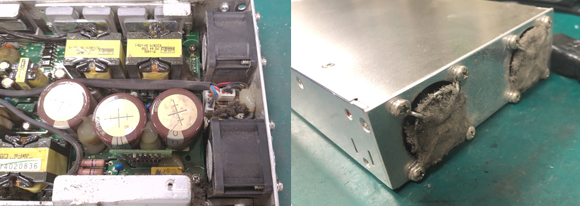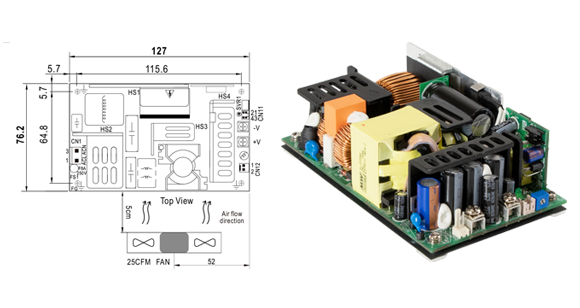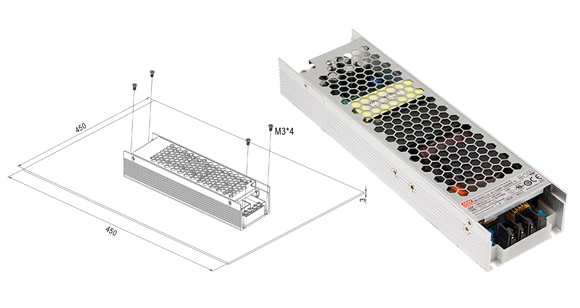
| DE | EN | Contact | About us | Terms of Business | Imprint | Privacy & Cookies | Help | Newsletter | Registration | Login | |
 |  |  |  |  |  |  |  |  |  |  |  |
| Home > News > Case Studies > Power Supplies > Every degree counts: Schukat will help you find the right cooling solution. | |||||||||||
Every degree counts: Schukat will help you find the right cooling solution.Increasingly compact power supply design and higher power densities call for cooling concepts that measure up.
When it comes to protecting power supplies from overheating, shutdown or, even worse, failure, staying below the maximum permitted temperatures is fundamental. At the same time, power supplies are becoming more and more efficient and providing an ever-increasing range of functions. The right thermal management is therefore crucial to achieving a long operational lifetime.The problemWith increasing efficiency, power supplies are getting smaller and smaller while at the same time providing an ever-increasing range of functions. Because the operational life of the installed components – especially the electrolytic capacitors – is heavily dependent on temperature, operating temperatures should, to the greatest possible extent, be kept below the maximum allowable temperatures. Good thermal design and suitable, effective heat dissipation are thus crucial to reliable operation. Solutions and examplesPower supplies can be cooled in a variety of ways: pure convection cooling, forced-air cooling with fans, contact cooling, and water cooling. Depending on the process, a manufacturer-specified installation position may have to be observed. If this is not done, heat may be dissipated inadequately and can accumulate in the device despite seemingly adequate ambient temperatures. Power supply with built-in fanAt first glance, actively cooling a power supply using an integrated fan is the simplest variant. The fan is appropriately sized and properly positioned by the manufacturer. But even here, two important points need to be observed: first, the maximum permissible ambient temperature, and second, unobstructed air circulation through clear vents. In applications where higher levels of dust and dirt are expected, air filtration for fan cooling is indispensable, and the filter must be regularly exchanged or cleaned as necessary. Disadvantages of fan cooling• Noise generated by rotational motion and airflow.
• Deposits on the fan opening / fan guards / filters: airflow may drop too low to cool sufficiently, which may trip the temperature monitoring or “kill” the unit through overheating. Tip: Avoid fans• Open-frame power suppliesOpen-frame industrial switching power supplies – i.e., supplies with no surrounding case – are often operated either at reduced power with only convection cooling or at nominal power with active cooling. For the (Fig. 2) EPP-500-24, a 24V open frame power supply from manufacturer MEAN WELL with a 5x3 inch footprint, the data sheet specifies a convection-cooled maximum power of 320W. If, however, you want to draw up to 500W of power from the unit, active cooling is necessary. In that case, you will need to consider the mounting position, maximum permissible ambient temperature, and the dimensioning and positioning of the fan. If the installation or fan positioning deviates from the data sheet, the maximum temperatures at the power supply's critical individual components must be taken into account. The corresponding specifications can be found in the manufacturer’s technical documentation.
• Contact coolingContact cooling is an elegant solution that sidesteps active fan cooling, dissipating a large proportion of the generated waste heat through a thermally optimized baseplate. The power supply and/or its baseplate are thermally coupled to, for example, a metal enclosure wall for heat dissipation. Contact cooling can dissipate much of the heat, but free air convection often also contributes. A measurement reference point (Tcase) on the power supply case indicates the maximum temperature that must not be exceeded during operation for a specific application. The use of such contact-cooled power supplies partially eliminates the need for ventilation openings, thus avoiding both the potential failure of the supply due to possible contamination as well as the noise generated by a fan.
Bei SchukatSchukat electronic offers power supplies from MEAN WELL and other manufacturers. Schukat stocks around 6000 different types of power supplies and DC/DC converters in production quantities at its automated central warehouse in Monheim am Rhein, Germany.
As a distributor, we provide fast, competent support with direct contact persons in-house, and also have an expert field service team for on-site problem solving. Customers benefit from rapid processing of inquiries, availability of data sheets and samples, and variable delivery quantities – from samples to series production. |
|


